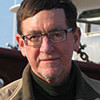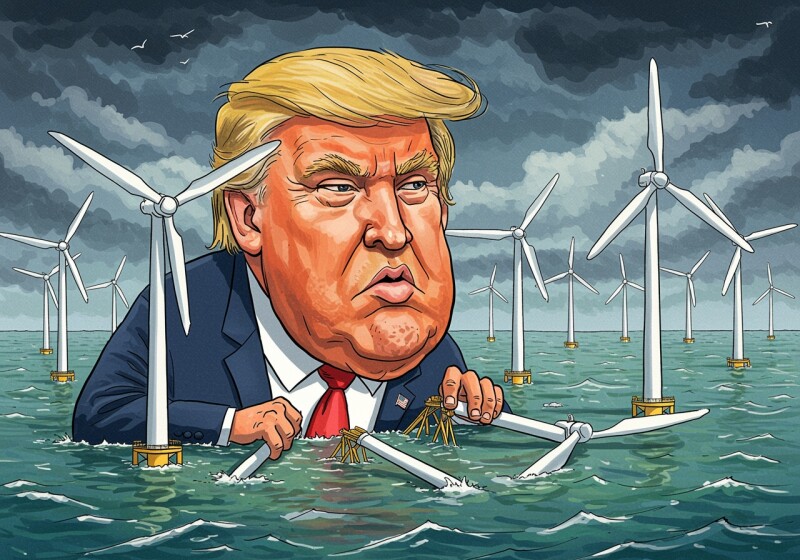The U.S. offshore wind industry was rocked less than 100 days into the new Trump administration, with aggressive moves by the White House to shut down Equinor’s Empire Wind project off New York and ongoing political pressure on Trump officials to do even more.
“Approval for the project was rushed through by the prior administration without sufficient analysis or consultation among the relevant agencies as relates to the potential effects from the project,” Interior Secretary Doug Burgum wrote in an April 16 memo directing the Bureau of Ocean Energy Management (BOEM) to halt construction activity.
Citing President Trump’s Jan. 20 executive order calling for a broad review of all offshore wind power projects in federal waters, Burgum wrote that the construction halt will remain pending review to “address these serious deficiencies.”
Planned as an array of 54 turbines between shipping approaches to New York Harbor, the 810-MW project recently started with subsea rock installation on the turbine sites, and pile-driving for foundation installation expected in May.
Project opponents furiously lobbied the administration to take dramatic action against the project, one of five East Coast wind installations where developers with approvals under the Biden administration have proceeded despite hostility from Trump.
Trump’s Inauguration Day order on wind power noted that “nothing in this withdrawal affects rights under existing leases in the withdrawn areas.” But it also demanded “a comprehensive review of the ecological, economic, and environmental necessity of terminating or amending any existing wind energy leases.”
The BOEM stop-work order showed wind power advocates and opponents alike how far the Trump administration will go. While obeying the order, Equinor said it is looking at its legal options.
Renewable power advocates warned the Trump administration will chill all energy investment with sudden U-turns.
“Halting construction of fully permitted energy projects is the literal opposite of an energy abundance agenda,” said Jason Grumet, CEO of the American Clean Power Association. “With skyrocketing energy demand and increasing consumer prices, we need streamlined permitting for all domestic energy resources. Doubling back to reconsider permits after projects are under construction sends a chilling signal to all energy investment.”
Empire Wind is one of the earlier East Coast offshore wind plans, with an 80,000-acre lease sold by BOEM for $135 million in 2016. It’s also been a longtime target of commercial fishermen in New York and New Jersey, who warned the project could prevent trawl and scallop fisheries near the apex of the New York Bight.
Jerry Leeman, CEO of the New England Fishermen’s Stewardship Association, welcomed the stop-work order.
“NEFSA applauds Secretary Burgum for pressing pause on the Empire Wind project, which regulators rushed to approve over the objections of working commercial fishermen and their families,” said Leeman. “We hope and expect the new administration will end the era of special treatment for foreign developers industrializing America’s fisheries.”
Two days before Burgum’s order, the Government Accountability Office (GAO) issued a long-awaited report on the Interior Department’s oversight of offshore wind development. The study was requested by Republican members of Congress who opposed the Biden administration’s push to approve projects.
It’s not quite the slam-dunk critics hoped for. In consulting a panel of 23 experts assembled with the National Academies of Science, the GAO outlined that “offshore wind energy development has various potential positive and negative impacts in several areas.”
Offshore wind power can replace some fossil fuel energy sources, reduce greenhouse gas emissions and improve public health with improved air quality. An October 2024 analysis predicted wind projects planned in the Atlantic and Gulf of Mexico could reduce U.S. greenhouse gas emissions by 5% by 2035, according to the GAO summary.
The report goes on to list cautions and caveats, including potential effects on “marine life and ecosystems, including through acoustic disturbance and changes to marine habitats.”
While wind development may bring new jobs and investments, “it could disrupt commercial fishing to varying degrees … (and) affect radar system performance, alter search-and-rescue methods, and alter historic and cultural landscapes.”
Critics have raised all those points for years, and increasingly focused on trying to link offshore wind development to whale deaths. The GAO paper does little to counter the National Oceanic and Atmospheric Administration’s (NOAA) position that “there are no known links between large whale deaths and ongoing offshore wind activities.”
Save the East Coast, an opposition group based in New Jersey and New York, is trying to make their own case with the help of a study that disputes NOAA’s blaming of large ship strikes and fishing gear entanglement for whale deaths.
“General ship traffic has nothing to do with whale deaths, nothing at all,” said Apostolos Gerasoulis, a computer scientist who developed an advanced geospatial tracking system to analyze vessel traffic and whale strandings from New England through the New York Bight and Virginia.
A retired Rutgers University professor, Gerasoulis was a co-creator of Teoma, an Internet search engine that powers Ask.com. He was at his seasonal home on Long Beach Island, N.J., in 2023 when “I heard they were going to put turbines in the ocean out here.”




